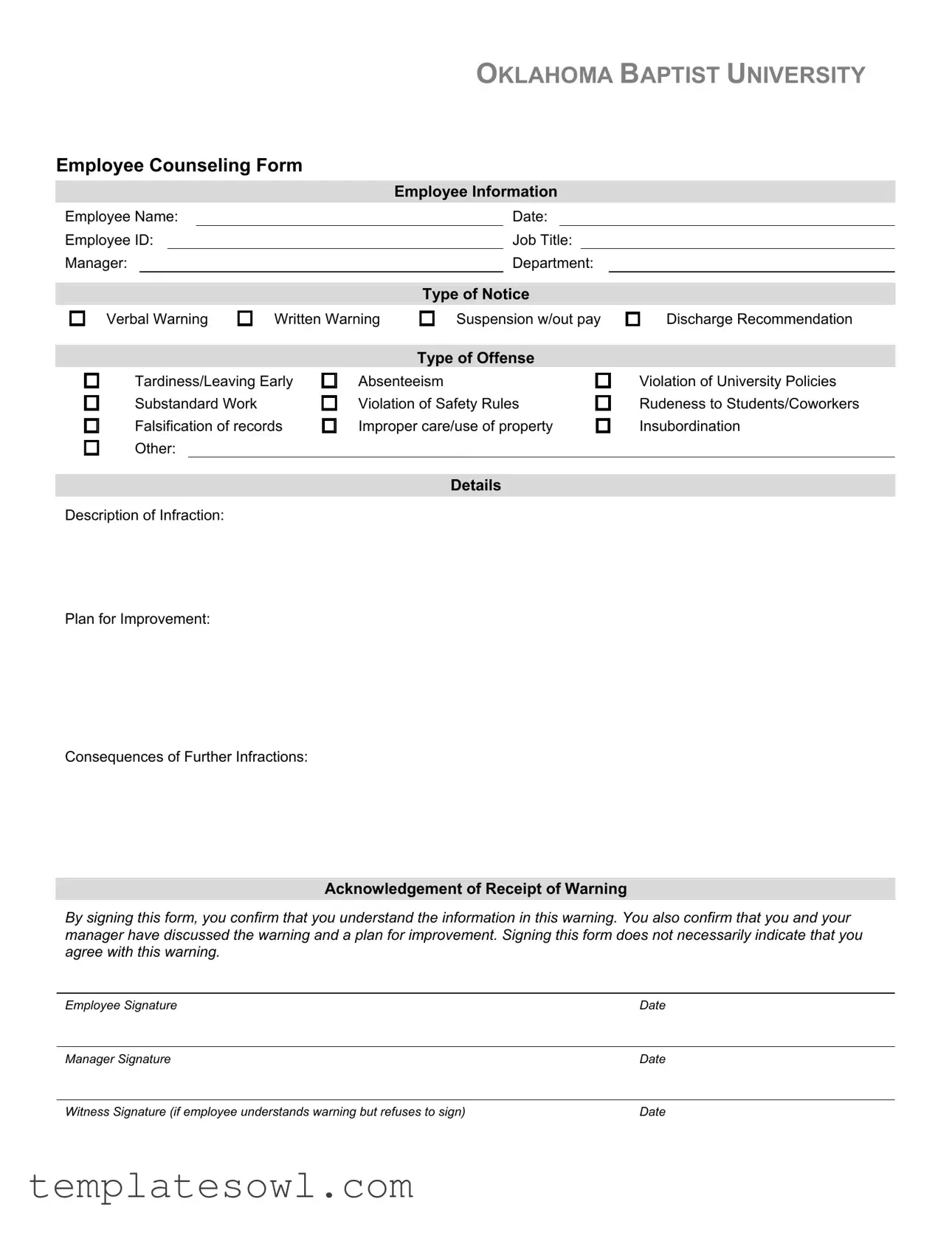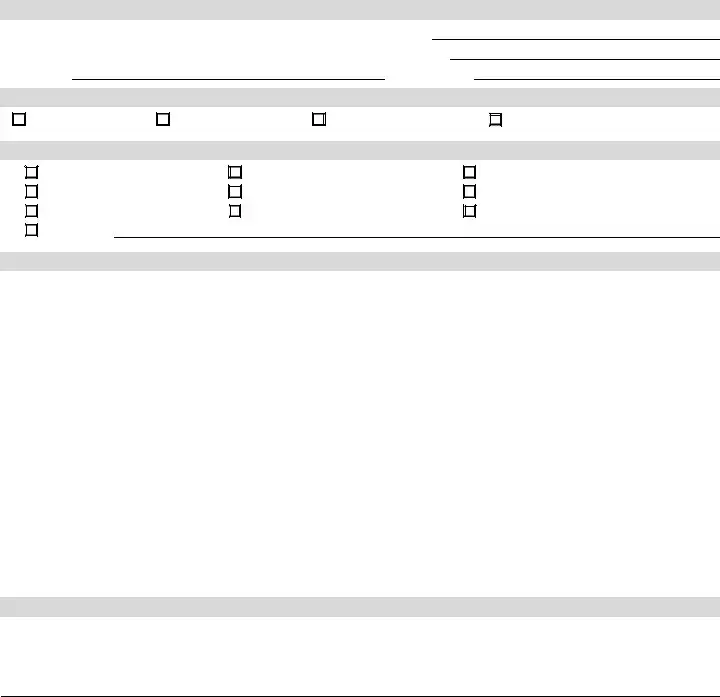What is the purpose of the Employee Counseling Form?
The Employee Counseling Form serves as a formal document used by Oklahoma Baptist University to address employee performance issues or violations of workplace policies. It provides a structured way for management to communicate the nature of the concern, outline the expected improvements, and document the acknowledgment of the warning by the employee.
What types of notices can be documented on this form?
The form includes options for various types of notices, including a verbal warning, written warning, suspension without pay, or discharge recommendation. Each notice type corresponds to the severity of the infraction and the necessary action taken by management.
What are some examples of offenses that the form covers?
The form allows for various offenses to be documented. Examples include tardiness or leaving early, absenteeism, substandard work, violations of safety rules, rudeness to students or coworkers, and falsification of records. The specifics of each case can also be tailored with the “Other” option if the infraction does not fit neatly into the provided categories.
What information is required to fill out the form?
To complete the Employee Counseling Form, details such as the employee's name, date, employee ID, job title, manager, and department are necessary. Additionally, the type of notice and the specific infraction must be clearly identified to ensure accurate communication of the issues at hand.
How does the form ensure a plan for improvement?
The form includes sections for detailing the specific description of the infraction and a plan for improvement. This structured approach ensures that expectations are clearly communicated and that the employee understands the steps required to address the issues raised.
What happens if the employee does not agree with the warning?
Signing the form indicates the employee's acknowledgment of the discussion and the details of the warning, but it does not mean they agree with it. The form includes a section for a witness signature in cases where the employee understands the warning but refuses to sign, thereby providing an additional layer of documentation.
What are the implications of further infractions noted on the form?
The form outlines the consequences of any further infractions, which may escalate the disciplinary process. By detailing these consequences, it ensures that the employee is fully aware of the potential outcomes should the issues continue without improvement.
Who needs to sign the form?
The form requires signatures from the employee, the manager, and, if applicable, a witness. This multi-signatory requirement adds accountability to the process and ensures that all parties recognize the seriousness of the warning and the discussions that have taken place.
How does this form impact future employment prospects for the employee?
Receiving a counseling form can have significant implications for an employee's future at the university. If improvement is not demonstrated following documented warnings, the employee may face more severe actions up to and including termination. However, a commitment to change may lead to recovery in performance and workforce standing.
Where can I obtain a copy of the Employee Counseling Form?
The Employee Counseling Form is likely available through the human resources department or the university's internal human resources portal. It is advisable for employees to become familiar with the form and its implications early on to ensure they understand the process.

